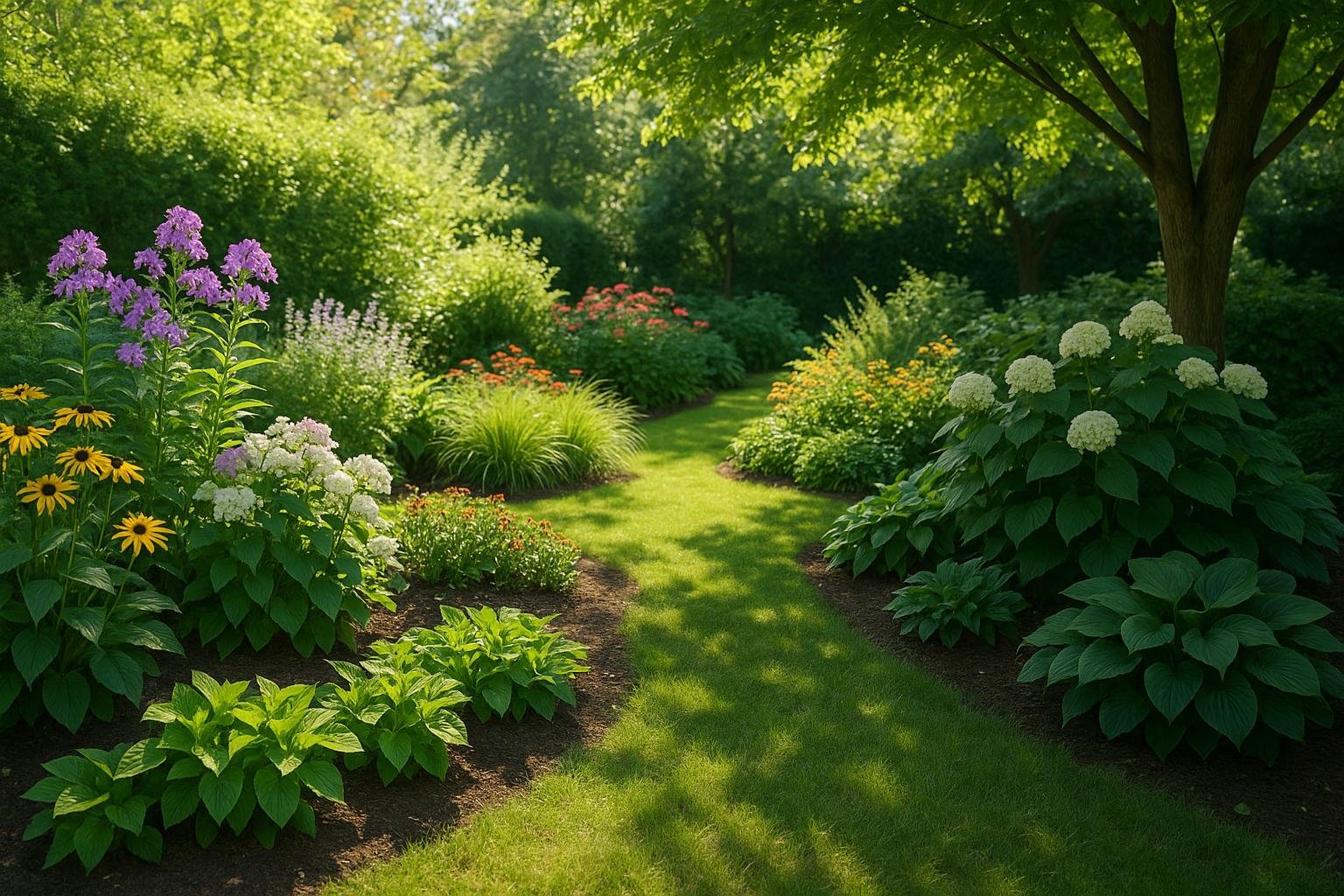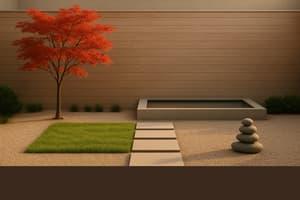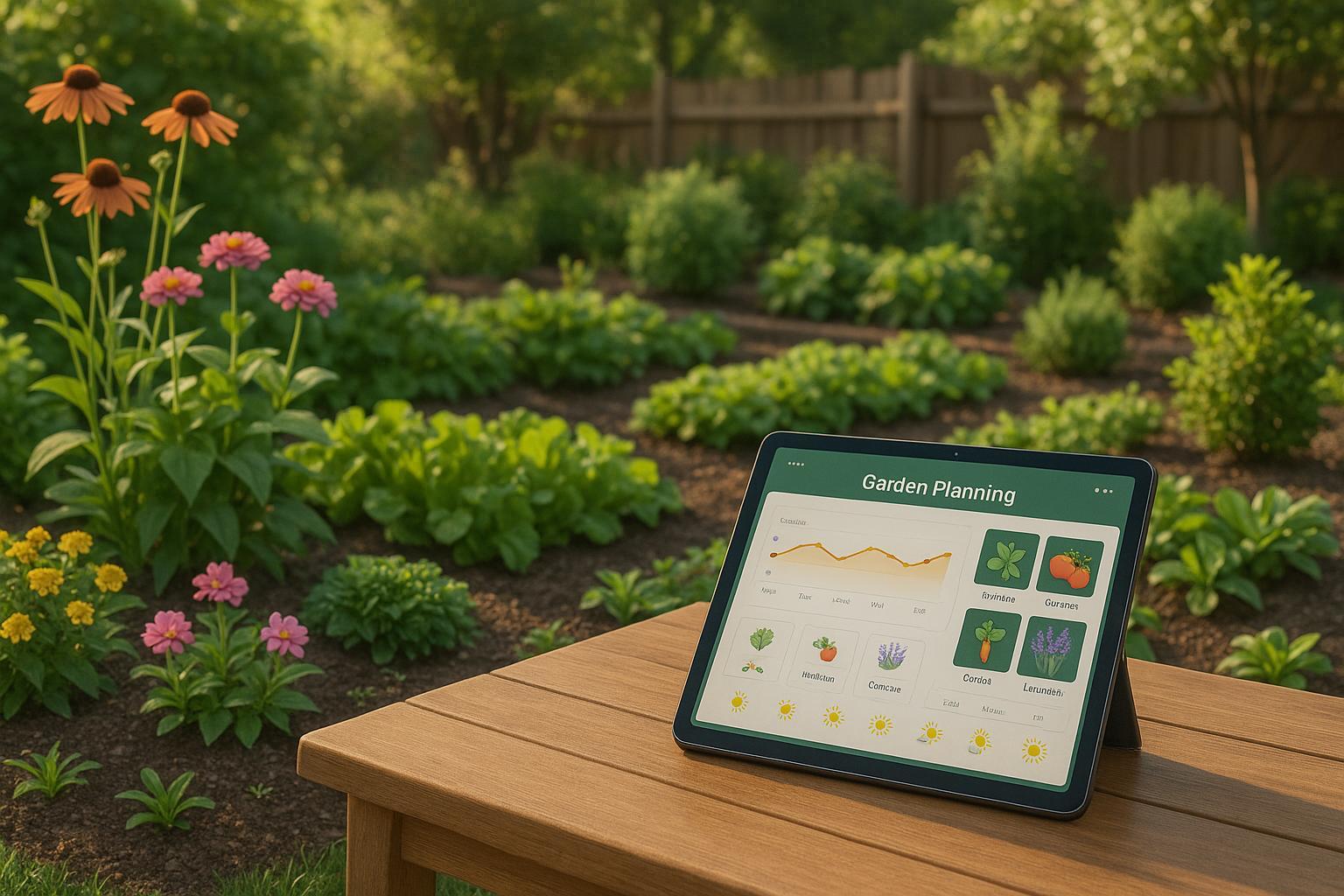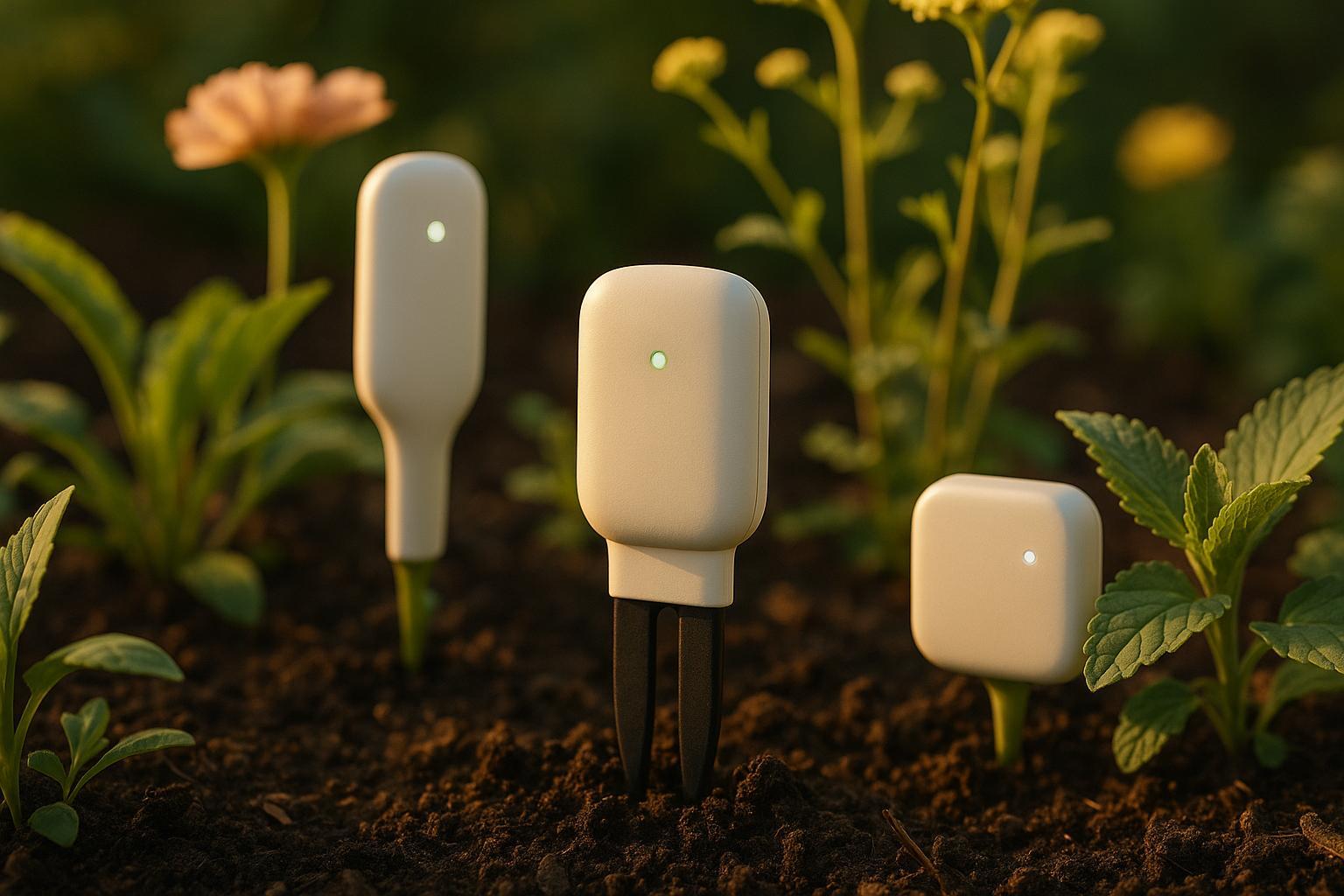AI Tools for Managing Sun and Shade in Gardens

Want a thriving garden? AI tools can help you manage sunlight and shade with precision. These tools analyze your garden’s unique conditions - like sunlight angles, soil, and microclimates - to recommend the best plant placements and layouts. Here's what they offer:
- Light Mapping: Tools like Shadowmap visualize sunlight patterns year-round, helping you plan plant placement.
- Real-Time Shadow Detection: Monitor changing shade from buildings or trees to protect sensitive plants.
- AI Design Tools: Apps like AIGardenPlanner analyze photos of your garden to suggest designs, plant choices, and layouts.
- Seasonal Light Forecasting: AI predicts light exposure changes, so you can adjust planting and care strategies.
| Light Condition | Daily Sun Exposure | Best For |
|---|---|---|
| Full Sun | 6+ hours | Vegetables, fruits, flowers |
| Partial Sun | 4–6 hours | Mixed gardens, adaptable plants |
| Partial Shade | 2–4 hours | Shade-tolerant plants |
| Full Shade | Less than 2 hours | Shade-loving species |
AI tools make gardening easier, more efficient, and productive by providing real-time insights and actionable recommendations. Whether you’re a beginner or an experienced gardener, these technologies help you optimize sunlight and shade for healthier plants and better yields.
🌞 Five Garden Apps I Use ~ Garden Design ~ Plant ID ~ Sun Tracker 🌞

Light Analysis Tools: AI Mapping Systems
AI mapping systems are transforming how gardeners and growers understand light exposure, helping them create the perfect conditions for plants to thrive.
Sunlight Pattern Tracking
AI-driven tools analyze environmental data to generate detailed light maps. One standout example is Shadowmap, a platform used by 200,000 people each month. It provides visualizations of sunlight patterns throughout the year, making it easier to plan landscaping or garden layouts.
With Shadowmap, users can:
- Examine solar potential for specific areas.
- View sunlight patterns for any chosen date and time.
- Upload 3D models of structures that impact light exposure.
"Shadowmap has helped me a lot! I also repeatedly compared the position of the sun (especially the shading) with the actual situation over a period of more than 2 weeks, and it is really cool how realistic it is – I think it would help many PV planners." - Bernd H., Shadowmap Studio User
For on-site analysis, tools like the Luster Leaf 1875 Rapitest Suncalc (priced at $18.90) measure Photosynthetically Active Radiation (PAR) over a 12-hour period. These tools, combined with AI-generated maps, offer a more complete picture of light conditions. Real-time shadow detection further enhances this by refining light management strategies.
Live Shadow Detection
Static light maps are helpful, but real-time shadow detection takes things a step further by monitoring dynamic changes in shade. AI systems can instantly detect shadows cast by buildings, trees, or other structures, offering a more accurate and up-to-date view.
"Anyone who has spent time trying to interpret shadows into a drawing knows that it is not always intuitive. Shadow Maker effortlessly fuses building form, solar location, date and time into one equation for real design representation." - Anna Kenoff, Co-Founder of Morpholio
| Shadow Analysis Feature | Benefit |
|---|---|
| Real-time Visualization | Instantly see current shadow patterns |
| Seasonal Forecasting | Plan for shade changes across the year |
| Custom 3D Modeling | Factor in structures and landscaping |
| Time Selection | Simulate light conditions for any specific date |
These tools allow gardeners to optimize layouts by considering both immediate and seasonal light conditions. By predicting shadow patterns throughout the year, they make it easier to design year-round planting schedules and strategically place plants for maximum growth.
Garden Design: AI Light Planning Tools
AI is reshaping the way we design gardens, using advanced tools to balance sunlight and shade for optimal growth and visual appeal.
AI Photo-to-Design Tools
AIGardenPlanner is a standout tool that transforms garden photos into detailed designs by analyzing natural light patterns. This approach blends functionality with aesthetics. Here's how it works:
| Design Factor | AI Analysis |
|---|---|
| Light Exposure | Identifies sunny, partially shaded, and fully shaded zones |
| Local Climate | Considers seasonal temperatures and rainfall for tailored designs |
| Existing Features | Takes into account permanent structures, trees, and other fixtures |
| Space Optimization | Maximizes usable growing areas based on light availability |
"AI garden design represents a cutting-edge approach to landscape planning that leverages machine learning and advanced algorithms to create personalized, optimized outdoor spaces." - BytePlus Editorial Team
This technology lays the groundwork for selecting the ideal garden style.
Garden Style Selection
Once the light analysis is complete, the next step is choosing a garden style that complements your local conditions. AIGardenPlanner offers more than 50 garden styles, each tailored to specific light and climate factors. This ensures that the design not only looks great but also thrives in its environment.
For instance, a 2024 case study demonstrated how a 200-square-foot city balcony was transformed using AI tools. The result? A tiered raised bed system that boosted vegetable yields by 40% by optimizing light exposure.
Light-Based Plant Selection
After selecting a style, AI tools can also guide you in choosing the right plants. By analyzing microclimates, seasonal changes, and individual plant requirements, these systems provide precise recommendations. AIGardenPlanner's AI Plant Advisor, for example, offers tailored plant suggestions along with detailed growing guides based on light conditions.
"Applications like ChatGPT can actually help you to identify plants and suggest which ones to grow based on your garden preferences and the characteristics of your yard." - Pam Maynard, CEO of Avanade and Chair of the Royal Horticultural Society's Council Technology Group
sbb-itb-4d6a8dd
🚀 Ready to Reinvent Your Garden?
Join thousands of homeowners who have transformed their gardens using our AI design tool. Upload one photo to explore endless possibilities.
Get your AI garden designs →Seasonal Light Changes: AI Forecasting
AI is revolutionizing the way gardeners understand and adapt to changes in seasonal light patterns.
Light Pattern Predictions
By analyzing a mix of data sources - like satellite imagery, weather reports, and property blueprints - AI can predict light exposure with impressive accuracy. Here's how different data types contribute to these forecasts:
| Data Source | Purpose of Analysis |
|---|---|
| Satellite Imagery | Maps the overall layout of the property and existing structures. |
| Cloud Cover Data | Predicts daily and seasonal shifts in light availability. |
| Local Climate Data | Anticipates weather patterns that influence light exposure. |
| Property Blueprints | Identifies permanent features that create shade. |
Tools like AIGardenPlanner take it a step further by factoring in hyperlocal weather patterns and microclimatic conditions. This means gardeners can rely on highly accurate light forecasts to make smarter seasonal decisions.
Seasonal Garden Adjustments
AI-driven insights empower gardeners to fine-tune their strategies throughout the year. Here are some practical recommendations:
- Plant Rotation: Shift plant locations to align with changing light conditions.
- Shade Structures: Use coverings to protect delicate plants during periods of intense sunlight.
- Watering Adjustments: Modify irrigation schedules based on seasonal light exposure.
- Growth Stage Timing: Time planting and pruning to match optimal light availability.
What’s even more impressive? AI can predict how your garden’s elements will interact with light changes years into the future.
To get the most out of these forecasts, consider these steps:
- Document Current Conditions: Upload clear photos and accurate measurements of your garden for AI analysis.
- Monitor Seasonal Shifts: Pay close attention to light changes during critical periods like spring and fall equinoxes.
- Plan Ahead: Adjust planting strategies and care routines in advance to avoid any negative impact on plant growth.
Conclusion: AI Benefits for Garden Light Planning
AI is reshaping the way we approach garden light planning, combining advanced analysis with practical design tools. By integrating artificial intelligence into garden management, gardeners can now achieve impressive precision in managing sunlight and shade, ensuring plants thrive under optimal conditions.
The agricultural industry has already seen the impact of AI, with studies showing a reduction in energy consumption by up to 15%. This efficiency is part of the reason the market for AI in agriculture is expected to grow from $1.7 billion in 2023 to $4.7 billion by 2028.
For everyday gardeners, these advancements translate into real, hands-on benefits:
| Benefit Category | Impact on Gardening |
|---|---|
| Precision Care | Real-time monitoring and automatic adjustments for better plant health |
| Resource Efficiency | Smarter use of light resources, minimizing waste |
| Time Management | Automated systems that handle tracking, freeing up time for other tasks |
This harmonious blend of cutting-edge AI analytics and garden design underscores a forward-thinking approach to creating climate-conscious, efficient landscapes.
"Our plant data was initially sourced from several leading US horticulture institutions and has been augmented using AI. PlantTAGG can predict with high accuracy if a plant will live or die based on where it will be planted." - Andrew Levi, CEO of PlantTAGG
"While data accuracy is always a concern, generative chatbot technology is producing much better quality answers to basic gardening questions than was possible even a few years ago." - Mary Jane Duford, Home for the Harvest
FAQs
How can AI tools help gardeners optimize plant placement based on sunlight and shade conditions?
AI tools like AIGardenPlanner simplify the process of designing gardens that support healthy plant growth by balancing sunlight and shade. These tools analyze sunlight exposure in specific areas of your garden and suggest plants that thrive under those conditions, making it easier to create a thriving outdoor space.
Take AIGardenPlanner as an example. This tool uses advanced AI to turn garden photos into polished, professional designs. It also provides recommendations on where to place plants based on factors like your local climate, personal preferences, and available light. With these features, gardeners can create layouts that are both visually appealing and practical, ensuring plants receive the right amount of sunlight all year round.
How does real-time shadow detection improve garden planning and plant health?
Real-time shadow detection can make a big difference for gardeners looking to optimize their garden layouts. By tracking how sunlight and shade move across your garden throughout the day, you can position plants where they’ll receive the right amount of light. This means sun-loving plants can soak up the rays in brighter spots, while shade-tolerant varieties can flourish in areas with less direct light.
This method doesn’t just improve plant health - it also helps avoid common problems like stunted growth or poor flowering caused by placing plants in unsuitable conditions. Plus, it adds to the overall harmony of your garden, creating a space where plants are set up to thrive in the environment that suits them best.
How can AI tools help gardeners adjust to changing sunlight and shade throughout the year?
How AI Tools Assist Gardeners with Light and Shade
AI tools are transforming how gardeners manage seasonal changes in sunlight and shade by offering a deeper understanding of light patterns throughout the year. For instance, platforms like AIGardenPlanner can create detailed light maps using photos of your garden. These maps highlight areas of full sun, partial shade, and full shade, taking into account the seasonal shifts in sun angles and daily light intensity.
With this information, gardeners can make smarter choices about where to place plants and which types to grow, ensuring every plant gets the right amount of light it needs to thrive. Beyond just placement, AI tools can also recommend the best planting times by analyzing weather trends and historical light data. This alignment with seasonal changes not only supports healthier plants but also makes managing your garden more efficient.
🎨 Visualize Your Dream Garden Today!
Transform any outdoor space into a professional landscape design in minutes. Just upload a photo, choose your style, and let our AI do the rest.
Start your garden transformation now →Related posts
Related Articles

Ultimate Guide to Seasonal Plant Selection
Learn how to select seasonal plants for your garden based on climate, soil, and light conditions with AI tools for tailored recommendations.

5 Key Features of Minimalist Garden Design
Explore the essential elements of minimalist garden design, emphasizing simplicity, balance, and low maintenance for a serene outdoor space.

AI Climate Data for Garden Planning
Explore how AI tools transform garden planning with tailored plant recommendations, weather insights, and sustainable designs for thriving ecosystems.

Top 5 Data Compression Methods for IoT Sensors
Explore the top five data compression methods for IoT sensors in garden monitoring systems, enhancing efficiency, performance, and energy savings.

Seasonal Planting Trends: AI Insights for 2025
Explore how AI is revolutionizing gardening in 2025 with smarter plant choices, eco-friendly practices, and resilience against climate challenges.

AI Tools for Holiday Garden Planning
Transform your garden into a festive holiday display effortlessly with AI tools that personalize designs and plant recommendations.